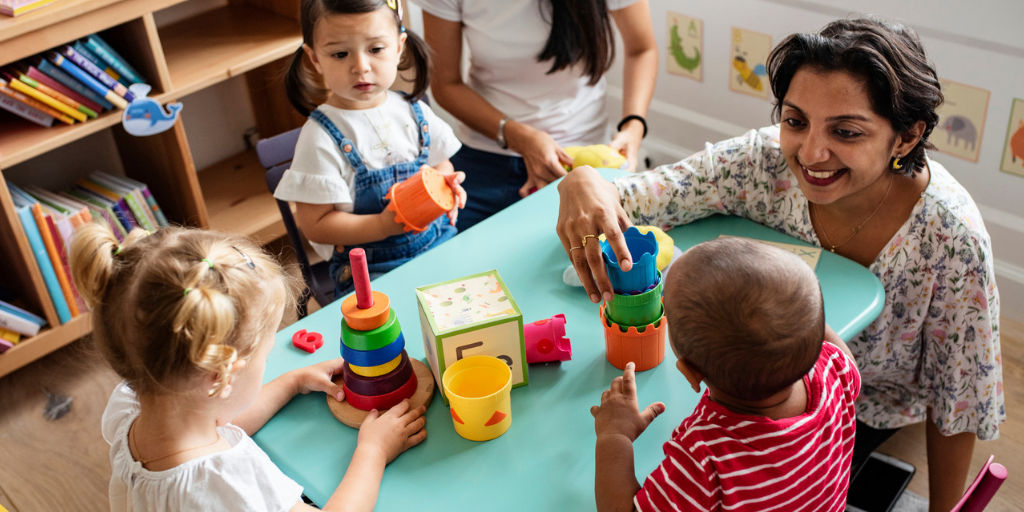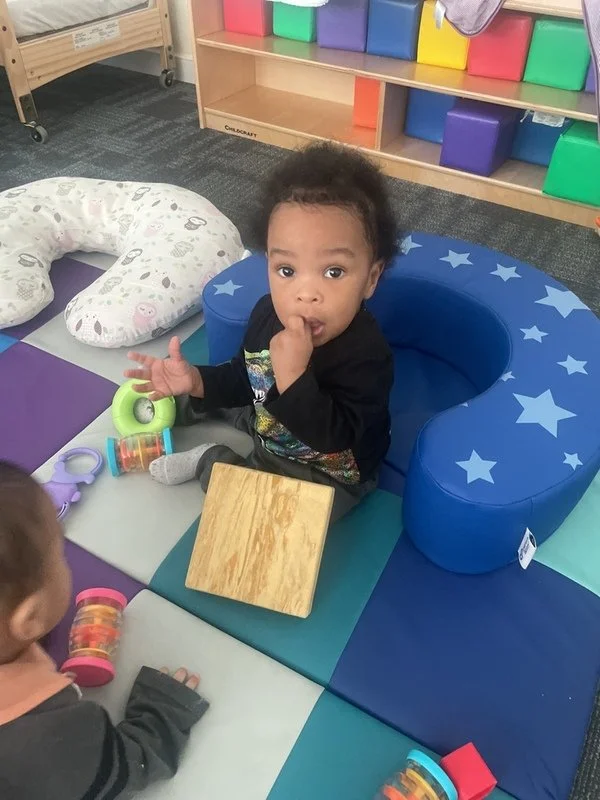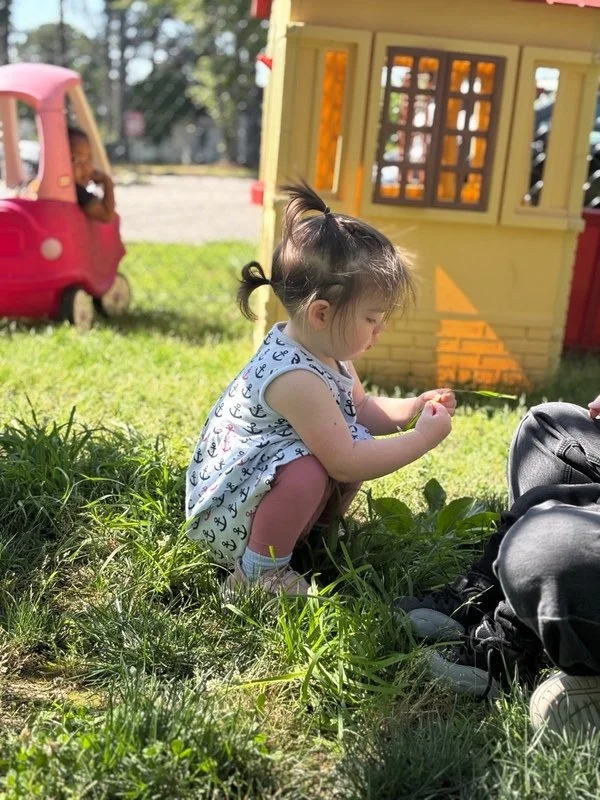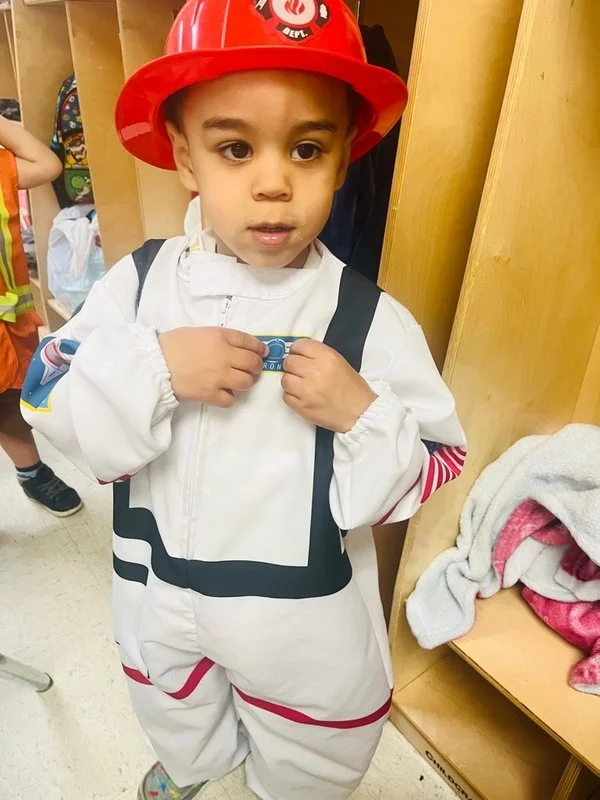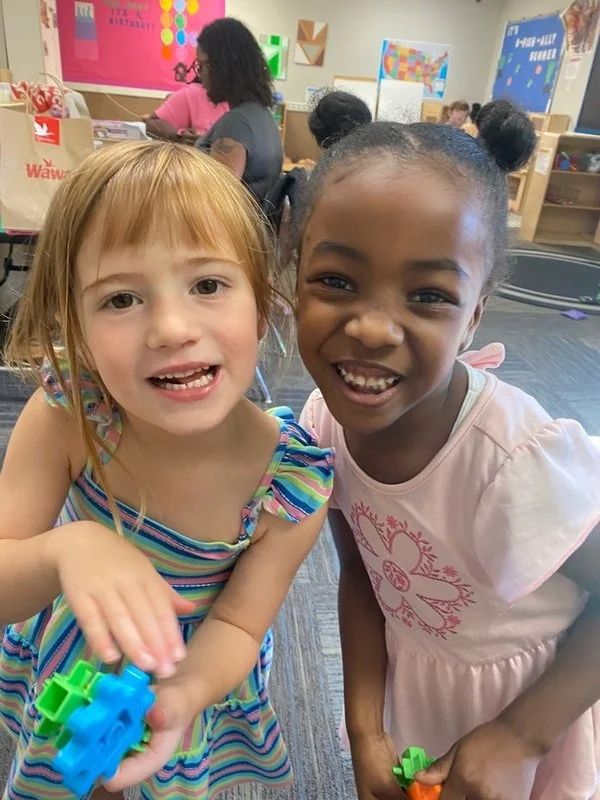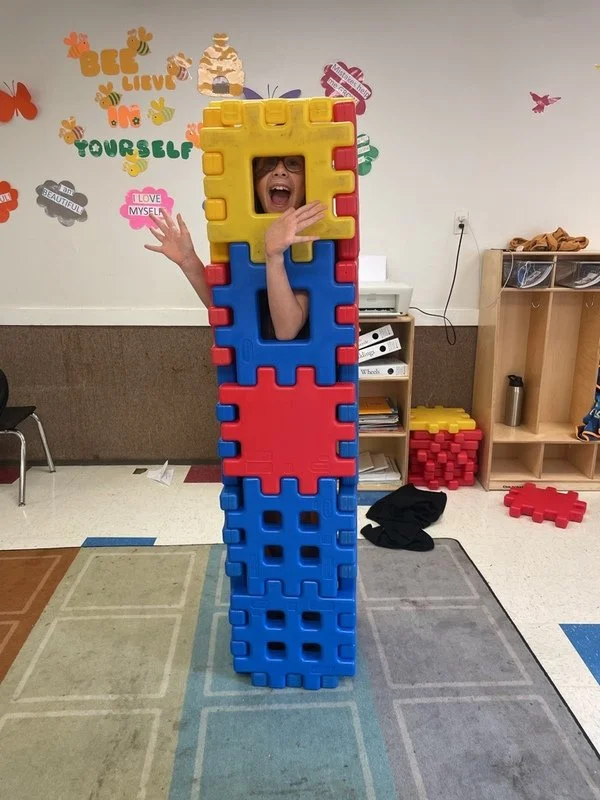Our Programs
Infant Room
The infants’ classroom, for children ages six weeks to approximately sixteen months, is a special place where our youngest students receive quality care while having opportunities to grow, explore, and learn! Unlike other classrooms, families provide a schedule specific to their child’s daily routine at home to maintain consistency. Our staff can assist with this endeavor if desired and will incorporate other activities into the schedule to make for an action-packed day. All infants have a designated crib for personal space while having access to various infant equipment and shared space where babies can socialize and explore under guided supervision. The classroom is split into two sides: non-mobile and mobile. Once students transition to the mobile side, they work to acclimate to a more universal schedule and routine in preparation for the toddler age group.
Toddler Room
The toddlers’ classroom, for students approximately sixteen to twenty-four months, is an exciting realm with more space and equipment for opportunities to explore! Students in this class operate on a daily routine conducive to their age and development. There are several benchmarks students should reach to transition into this class: comfortable walking, napping once during the school day (directly following lunch), self-feeding, using a sippy cup instead of a bottle, and replacing the crib with a small cot. Children are exposed to student-driven and teacher-led activities as they work on language, motor skills, and peer interaction.
Twos Class
The twos’ classroom, for children from approximately twenty-four to thirty-six months, is a coming-of-age environment where students begin transitioning into a more structured classroom environment. Social and emotional awareness are crucial components as students become more comfortable interacting with their peers in various activities and scenarios. Along with sharpening communication and motor skills, students also focus on potty training with consistently frequent restroom trips and modeling of appropriate bathroom behavior. Children must reach this benchmark before fully transitioning into the preschool class.
Preschool Class
The preschool classroom, for students ages three and four, begins their preparation for school, which will be here in the blink of an eye! This environment still emphasizes learning through play with numerous opportunities for student-driven activities, while introducing them to classroom features often present in the K-12 environment. Students learn about being a part of a community and the role they play as valued members. Characteristics involving responsibility, independence, and accountability are integrated into the environment, so students can continue to grow into their selves while also understanding the importance of being a part of a larger group.
Pre-K Class
The pre-k class, for students ages four turning five, is the last stop before they enter kindergarten. We prioritize ensuring all students in our learning community have the skills necessary to be successful in their future kindergarten classroom. This involves a new curriculum to explore and more advanced equipment for a higher level of engagement, and the opportunity to enhance critical thinking skills. We also complete formal and informal assessments as part of our affiliation with HCPS’s VPI program to ensure students reach the appropriate benchmarks before entering kindergarten.
School-Age Class
Our School-Age program focuses on maintaining a consistent routine after school while providing engaging activities for students once they have completed homework and eaten a hearty snack. The goal is for students to be able to go home with their families and spend time with loved ones in the evening instead of having to complete homework. During the summer and on school holidays, we set up events, both in-house and off-site, to expose children to a wide array of activities and allow them to explore various realms and topics. In a world of technology, we make the effort to focus more on social and emotional well-being and becoming more confident in face-to-face interactions. Therefore, screen time is limited.
